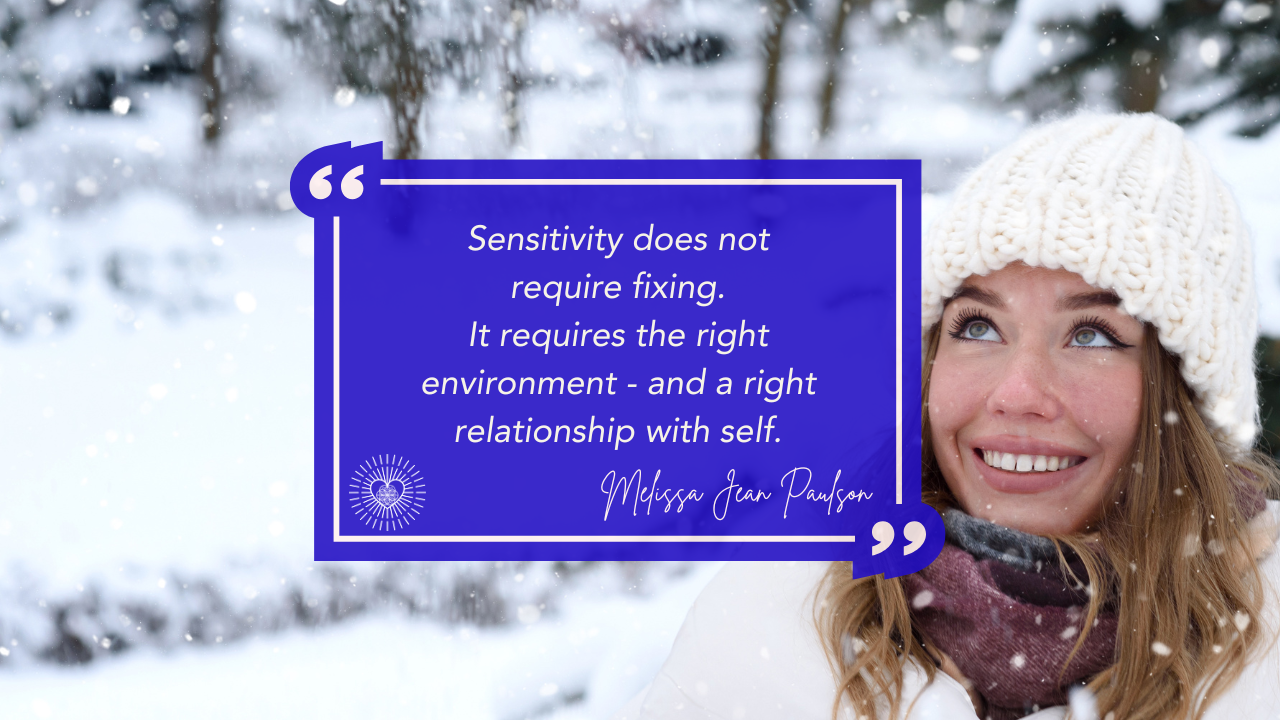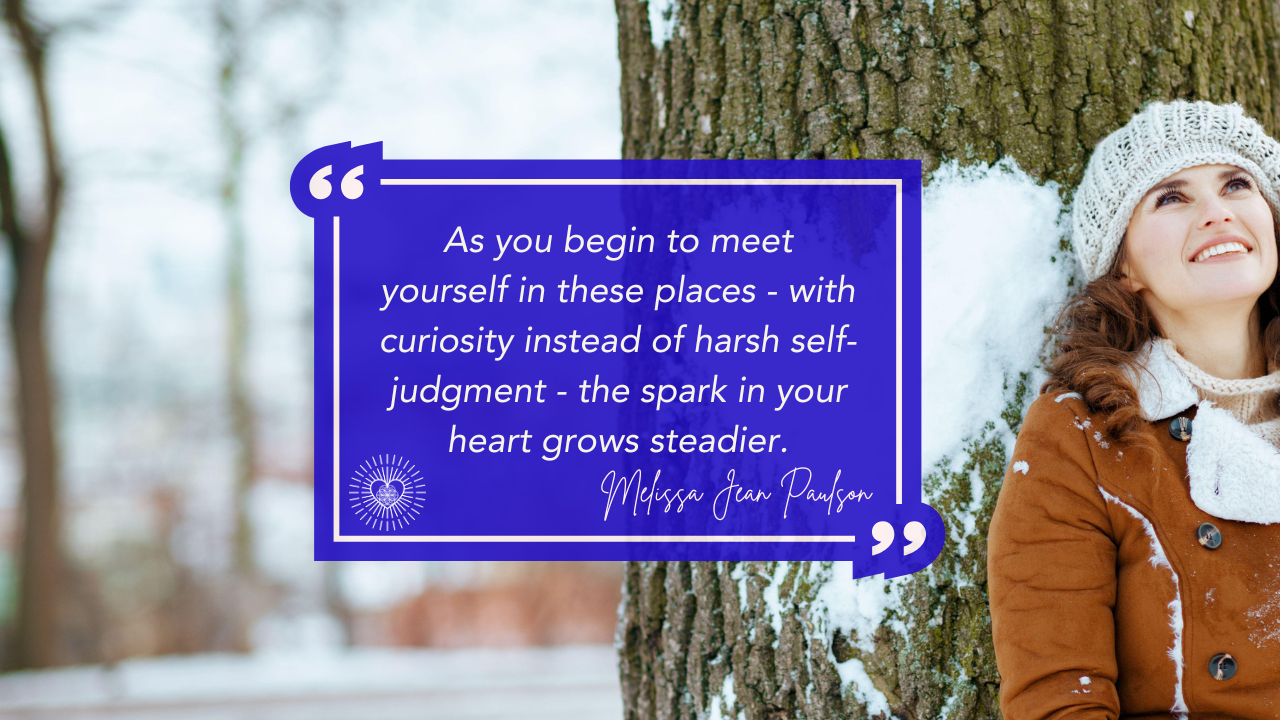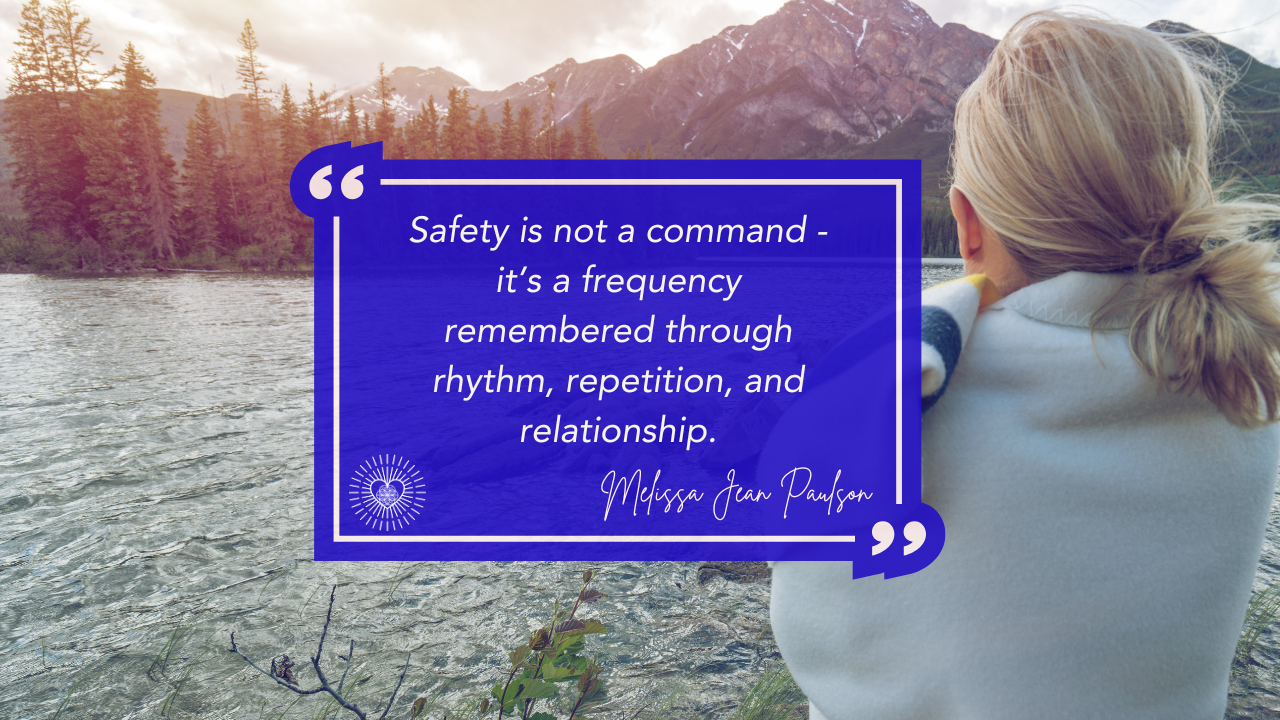Highly Sensitive Series (Part 6 of 9): Building Physical Resilience as a Sensitive Woman (Body Series 3 of 3)
Feb 01, 2025
Welcome to the final part of our Body Series, where we explore how to build true resilience by honoring your sensitive nature's sophisticated response system. In Parts 4 and 5, we discovered the intricate communication network within your sensitive body and learned to interpret its signals. Now, we'll integrate this understanding to develop strength that works with, rather than against, your natural traits.
Understanding Your Innate Strategy
Dr. Elaine Aron's research reveals that high sensitivity isn't just a collection of traits - it's an innate survival strategy that appears in about 20% of the population. This genetic adaptation allows for deeper processing of all experiences, including physical ones. When we understand this fundamental aspect of our nature, it transforms how we approach building physical resilience.
The Mind-Body Intelligence Network
Your sensitive system operates through a sophisticated network of connections. The stress response patterns we explored in Part 4 and the gut-brain communication we discussed in Part 5 work together as an integrated feedback system. This network provides constant information about:
- Your current stress levels and capacity
- Environmental impacts on your system
- The effects of movement and rest
- Your need for integration and recovery
Redefining Resilience for the Sensitive Body
Traditional approaches to building physical resilience often involve pushing limits and powering through. Yet understanding your sensitivity as a survival strategy reveals why this approach often backfires for highly sensitive people. Your path to resilience needs to honor your natural way of processing experiences.
Think of resilience as a river, not a wall. A river has tremendous strength, yet it flows around obstacles rather than crashing through them. It knows when to rush and when to pool, when to deepen and when to spread wide. This is the kind of resilience that suits your sensitive system.
The Foundation of Sensitive Strength
Brain imaging studies by Dr. Bianca Acevedo demonstrate that highly sensitive people show increased activation in areas responsible for deep processing and awareness. This means your sensitivity itself is a form of strength - one that allows you to notice subtle signals and respond with greater awareness.
This biological foundation helps us approach building resilience in ways that support our natural traits:
- Honoring your body's need for integration
- Working with your stress response patterns rather than against them
- Respecting your gut instincts about movement and rest
- Creating environments that support your sensitive nervous system
Movement as Medicine
Physical activity becomes profound medicine when we understand how our sensitive systems process experiences. Your heightened awareness allows you to:
- Notice subtle effects of different types of movement
- Recognize early signs of overwhelm
- Understand your unique recovery needs
- Adapt activities to support rather than strain your system
Short Interval Training (SIT) aligns perfectly with the highly sensitive system. Unlike lengthy, intense workouts that can overwhelm our already heightened stress response, SIT offers brief bursts of activity followed by recovery periods - exactly what our processing style needs. This approach offers multiple benefits:
- Respects your need for integration between efforts
- Allows you to process experiences fully
- Supports hormonal balance
- Provides natural breaks for nervous system regulation
Your sensitive body thrives on movement that:
- Honors your deep processing nature
- Provides natural intervals for recovery
- Builds strength without overwhelming your system
- Allows you to tune into subtle physical cues
SIT can be adapted to any fitness level and life stage. Here are some gentle yet effective approaches that I enjoy as a sensitive woman:
- During a nature walk, find a small incline and do 10-30 second light 'power walks' or sprints uphill, followed by a gentle walk back down for recovery
- On a rebounder, alternate between 10-30 seconds of higher bouncing or jogging in place with periods of gentle bouncing
- In your home or yard, try 10-30 seconds of movement like high knees, jump rope, or dancing, followed by slower, gentler movement
- For lower impact, try speeding up your walking pace for short intervals during regular walks
Remember: The key isn't the specific activity but rather honoring your body's signals about intensity and duration. Start with shorter intervals and gradually build as your body guides you.
Creating a Strong Foundation
The earlier you begin honoring your sensitivity, the more intuitive these practices become. Whether you're in your 20s, 30s, 40s, or beyond, understanding and respecting your sensitive nature creates an invaluable foundation for lifelong wellbeing. When you attune to your sensitivity, you:
- Develop a deeper understanding of your body's signals before patterns of overriding them become ingrained
- Build sustainable movement practices that can flex and adapt through different life stages
- Create healthy boundaries around rest and recovery that serve you through life's transitions
- Learn to trust your body's wisdom during times of change
- Establish a relationship with your sensitive body that grows stronger and more intuitive over time
The Power of Recovery
For highly sensitive people, recovery isn't just about rest - it's about integration. Your deeper processing means you need time to fully absorb and integrate physical experiences. What others might dismiss as "just a workout" requires more complete processing in your system.
Recovery takes on three essential dimensions:
Physical Integration
Your body needs time to process the effects of movement. This might mean longer rest periods between training sessions or including gentle movement days between more challenging ones. Listen when your body signals for rest - this isn't laziness, it's intelligent self-regulation.
Nervous System Balance
After physical activity, your sensitive nervous system benefits from conscious downregulation. Simple practices like lying quietly, gentle breathing, or time in nature help your system return to baseline. This reset is crucial for building resilience without accumulating stress.
Hormonal Harmony
Our hormonal systems require consistent support throughout our lives. When we combine this with high sensitivity, honoring recovery becomes even more crucial. Quality sleep, stress management, and adequate rest between sessions aren't optional - they're essential for maintaining hormonal balance at every age and stage.
Creating Sustainable Practices
Building resilience as a sensitive person isn't about reaching a destination - it's about nurturing practices that support your wellbeing each day. Begin with activities that truly resonate with your nature:
- Begin your movement practice before the world awakens
- Create pockets of silence throughout your day
- Find ways to move that feel like play rather than obligation
- Honor your need for longer recovery periods
- Trust your body's signals about intensity and duration
The Wisdom of Cycles
As sensitive beings, our bodies move in natural cycles - daily, monthly, seasonal, and hormonal throughout our lives. Research shows that HSPs are more affected by both internal and external rhythms. Working with these cycles rather than against them builds a different kind of strength.
There will be times when you feel naturally energized and capable of more physical challenges. Other times, your body calls for gentler practices and deeper rest. This isn't inconsistency – it's your body's innate wisdom guiding you toward balance.
Integration: Mind, Body, and Spirit
Throughout our Body Series, we've explored how your physical sensitivity connects deeply with your emotional and mental experiences. True resilience emerges when we honor all aspects of our sensitive nature. The same depth of processing that makes you more aware of subtle physical sensations also attunes you to your body's needs for recovery and growth.
Looking Forward: Your Ongoing Journey
Building physical resilience as a highly sensitive person is an ongoing journey of listening and responding to your body's sophisticated communication system. Each day brings new opportunities to strengthen the trust between you and your sensitive body.
Your sensitivity isn't something to overcome – it's your guide to building sustainable strength. When you honor your body's signals, respect its rhythms, and give it the support it needs, you discover a resilience that goes beyond physical endurance to encompass true vitality.
Conclusion: Embracing Your Sensitive Strength
Building resilience as a highly sensitive woman means charting your own course. It means trusting that your body's needs are valid, even when they differ from others'. It means celebrating the strength that comes from working with, rather than against, your natural traits.
Now that we’ve explored physical resilience, the next step is reconnecting emotionally and spiritually. Many women who strengthen their bodies find they’re also called to open their hearts and deepen their sense of inner knowing. Physical well-being lays the foundation, but true alignment comes when mind, body, and spirit are in harmony. In Part 7, we begin this journey by exploring how to restore the heart-spirit connection that many sensitive women have lost over time.
Let this be your permission to build strength in ways that honor all of who you are – your sensitivity, your wisdom, and your inherent resilience.
As you continue developing your relationship with physical resilience, I invite you to reflect:
- How does your body communicate its need for rest or movement to you?
- What movement practices make you feel most energized and balanced?
Related Articles:
- Highly Sensitive Series: Navigating Your Body's Signals & Needs
- Highly Sensitive Series: Your Body's Unique Response System
- Highly Sensitive Series: Breaking the Cycle of Repetitive Thoughts
References:
¹ Aron, E. N., & Aron, A. (1997). Sensory-processing sensitivity and its relation to introversion and emotionality. Journal of Personality and Social Psychology, 73(2), 345-368.
² Price, C. J., & Hooven, C. (2018). Interoceptive Awareness Skills for Emotion Regulation: Theory and Approach of Mindful Awareness in Body-Oriented Therapy. Frontiers in Psychology.
³ Acevedo, B. P. (2020). The basics of sensory processing sensitivity. Journal of Applied Psychology.
This blog is part of The Re-Aligned Journey™ - A Spiral of Healing and Remembrance for sensitive women returning to right relationship with mind, body, and soul.
Join the Rise & Realign Lunar Letter
A weekly reflection of moon, mind, and body - guiding sensitive women to rise, reclaim, and remember.
Your privacy is sacred. We will never share or sell your information.






